Camping stoves buying guide
Choosing the right camping stove will help you on your way to easy morning brews, fry-ups or alfresco dinners. However, when there are so many styles of camping stoves on the market, it’s difficult to know where to begin, especially when you know that choosing the wrong stove might lead undercooked food and disappointing dinners.
Whether it’s powered by gas, electric, liquid fuel or another type of power, the most important thing about a camping stove is that it is fit for purpose. That’s why we’ll be covering all the different types of camping stoves here, advising on how to choose a stove when you’re camping in a tent, caravan, motorhome or glamping accommodation or facing cold weather conditions.
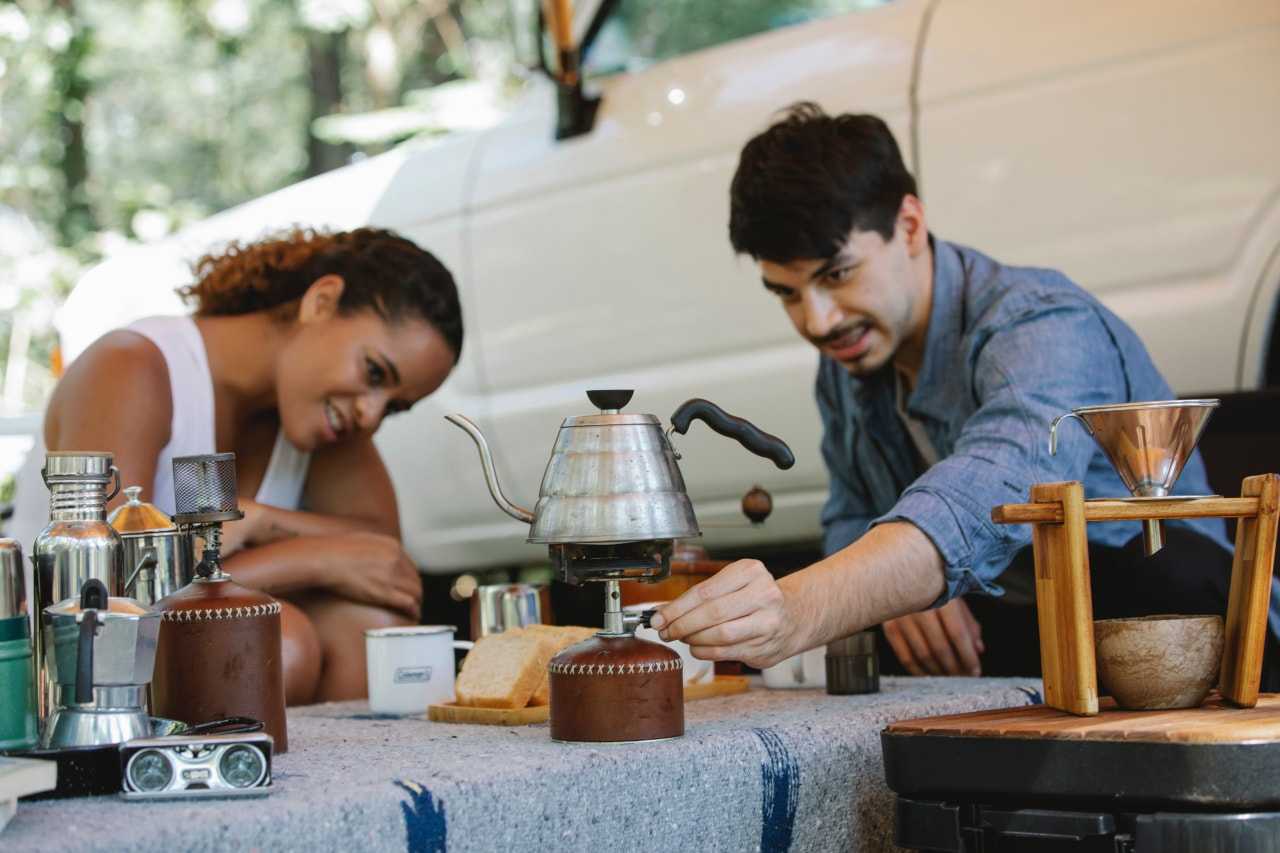
How to choose a camping stove
The first step to choosing a camping stove is considering whether you have access to electric hook-up or not. If you’re staying on a pitch without electricity, this will rule out electric camping stoves. After that, you’ll need to consider your budget, how much free luggage space you have and the conditions you’ll be camping in.
Different types of camping stoves
Electric camping stoves
Average cost: £30-40
Electric camping stoves require a pitch with an electric hook-up. Once connected to electricity, they’re quick to warm up and very reliable. Most models are also compact and lightweight, making them a portable option.
Gas canister stoves
Average cost: £25-£50
Gas canister stoves are fuelled by propane or butane canisters that are screwed onto the stove. Gas stoves are lightweight, reliable and easy to use. However, they can be unpredictable in cold weather conditions because the pressure of the fuel drops, reducing the strength of the burner.
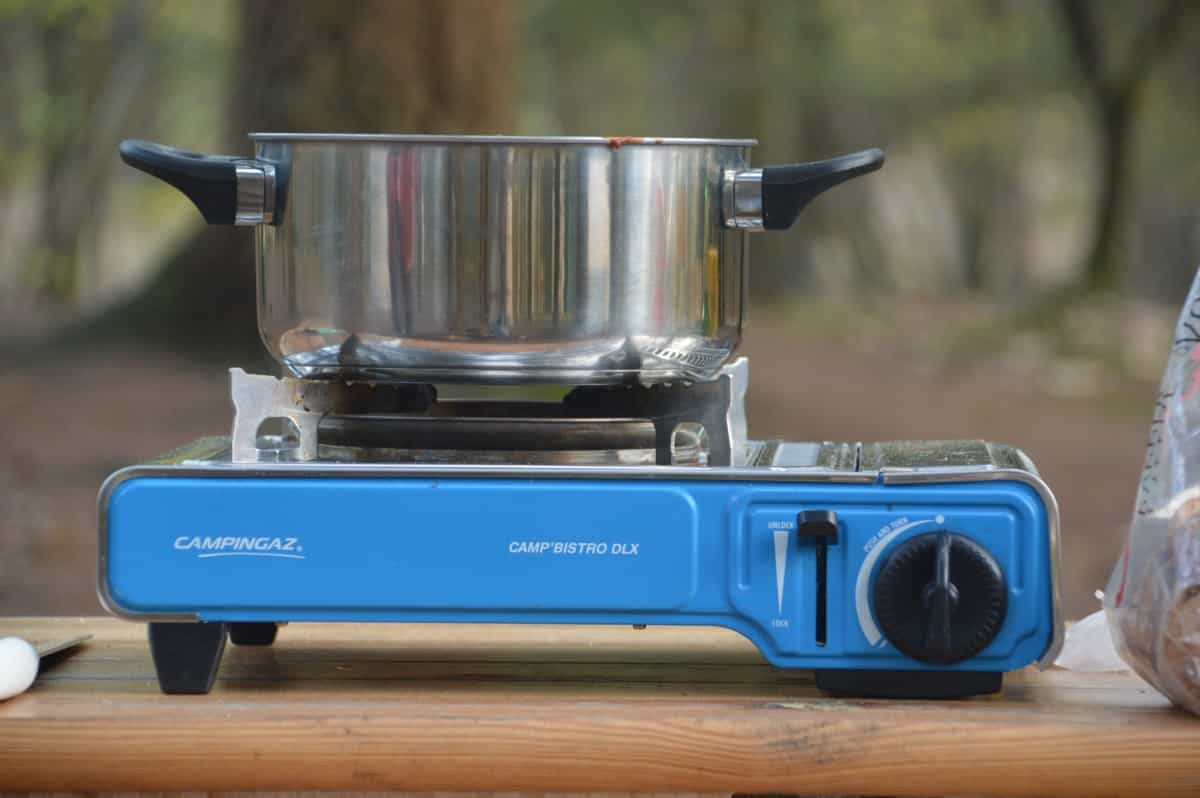
You’ll also need a store of gas canisters with you, which can weigh down your luggage somewhat. These are easily available at outdoor gear shops or major online retailers.
All-in-one stove systems
Average cost: £50-70
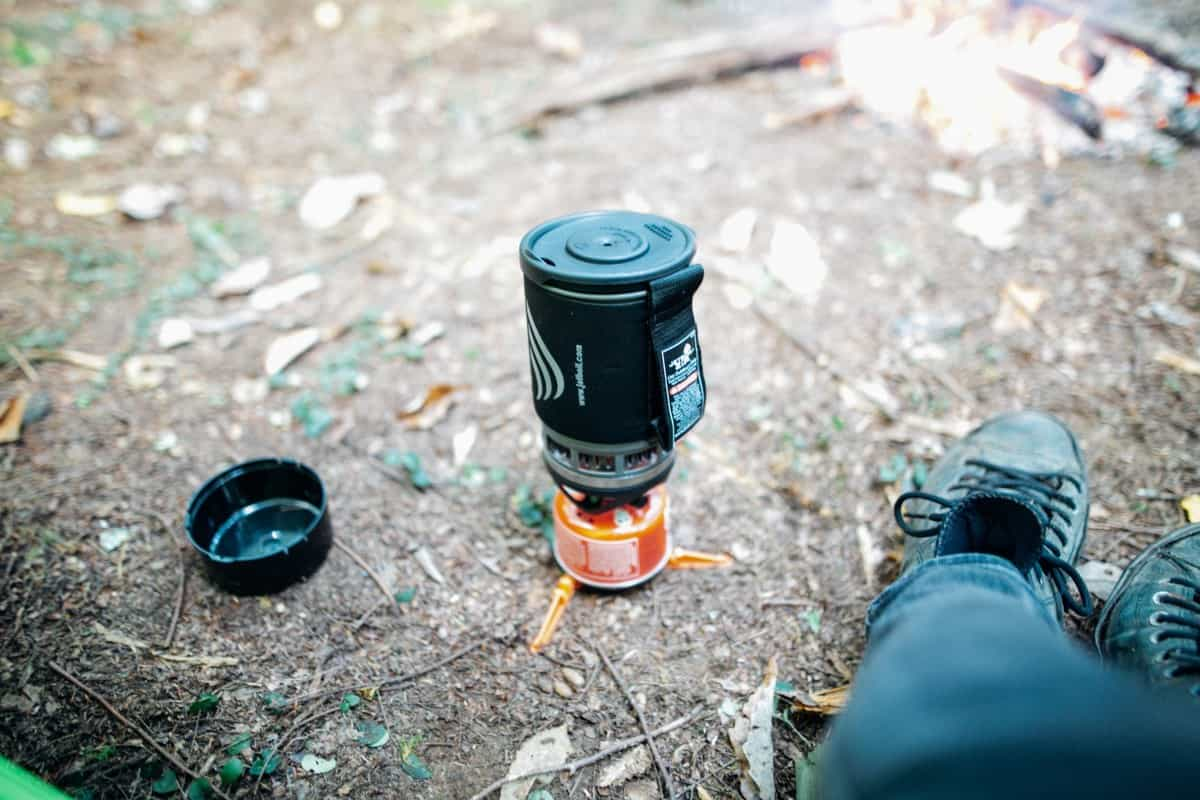
All-in-one stove systems are technically a type of gas stove. The difference is that the design includes a pot and burner in one. They’re more compact because the burner is screwed on top of the canister and the cooking pot (which is usually included in the pack) sits on top of the burner. As a result, you’ll be limited on cooking space because there’s only room for one pot at a time.
Alcohol-burning stoves
Average cost: £15-£25
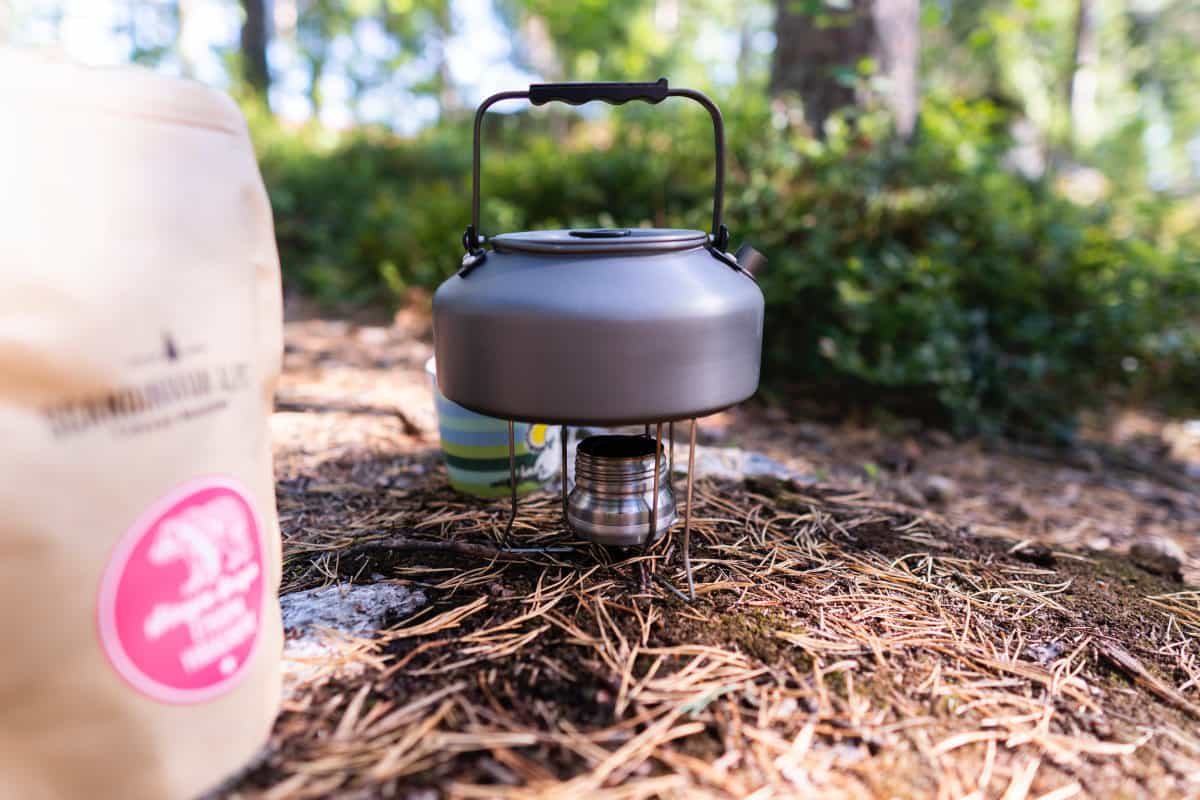
Safe and simple to use, alcohol-burning stoves are fuelled by methanol, ethanol or denatured alcohol. These stoves are, however, relatively inefficient and use fuel slowly, so it will take longer for water to boil or food to cook through. However, the many perks are that they are lightweight, compact, durable and safe to use, making them well-suited for expeditions and wild camping.
Liquid fuel stoves
Average cost: £40-60
Liquid fuel stoves are a reliable type of stove that must be hooked up to a bottle of fuel rather than a gas canister. The fuels are more readily available than gas canisters and could include petrol, diesel or white gas.
These stoves need to be cleaned regularly and the liquid fuel can be difficult to handle, resulting in spillages.
Multi-fuel stoves
Average cost: £20-50
Multi-fuel stoves are adaptable stoves that can be powered by either liquid fuels or gas canisters. They can also withstand cold temperatures or extreme altitudes. Like liquid fuel stoves, they require a lot of maintenance.
Family stoves
Average cost £40-80
Family stoves usually have several burners, so the chef can get a few dishes on the go all at once. That does, however, result in a bulky design that takes up space and weighs down your backpack. They’re well suited to motorhomes and caravans, large groups and events that require a big spread and may have features such as wind protectors or griddles.
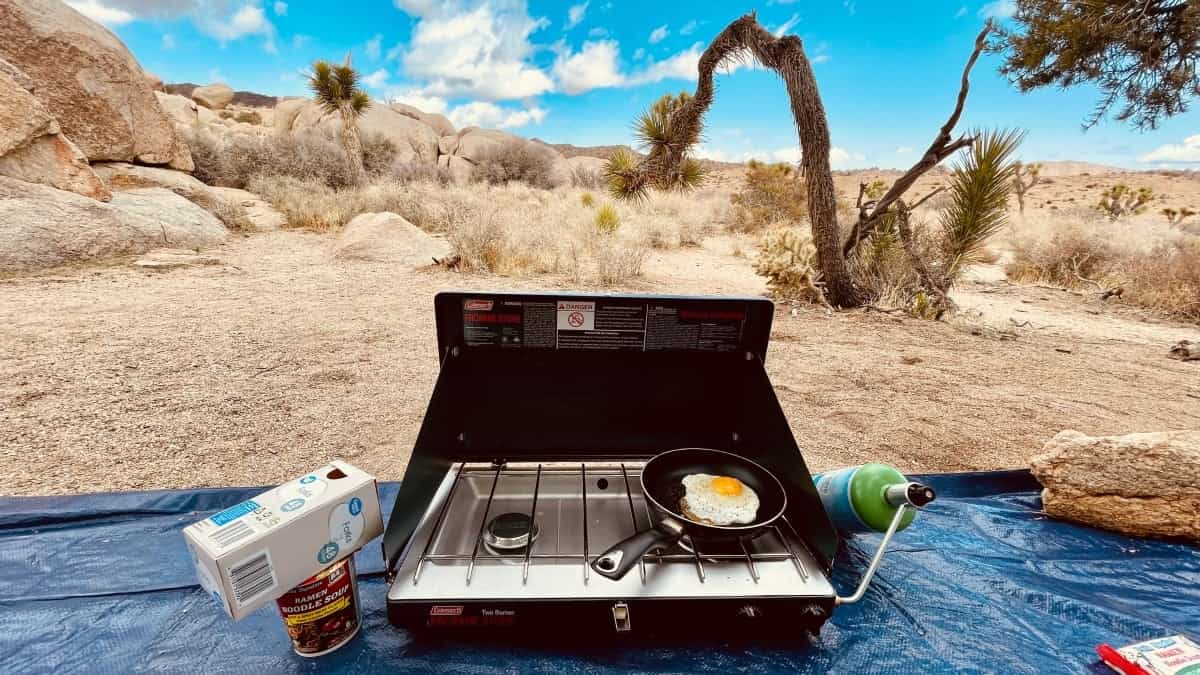
Woodburning stoves
Average cost: £25-40
Sustainable woodburning stoves are fuelled by burning firewood. They’re quick to start up, dependable as long as you have access to the natural materials, and work well even when you’re camping in bad weather conditions. However, they are heavier and bulkier than other stoves.
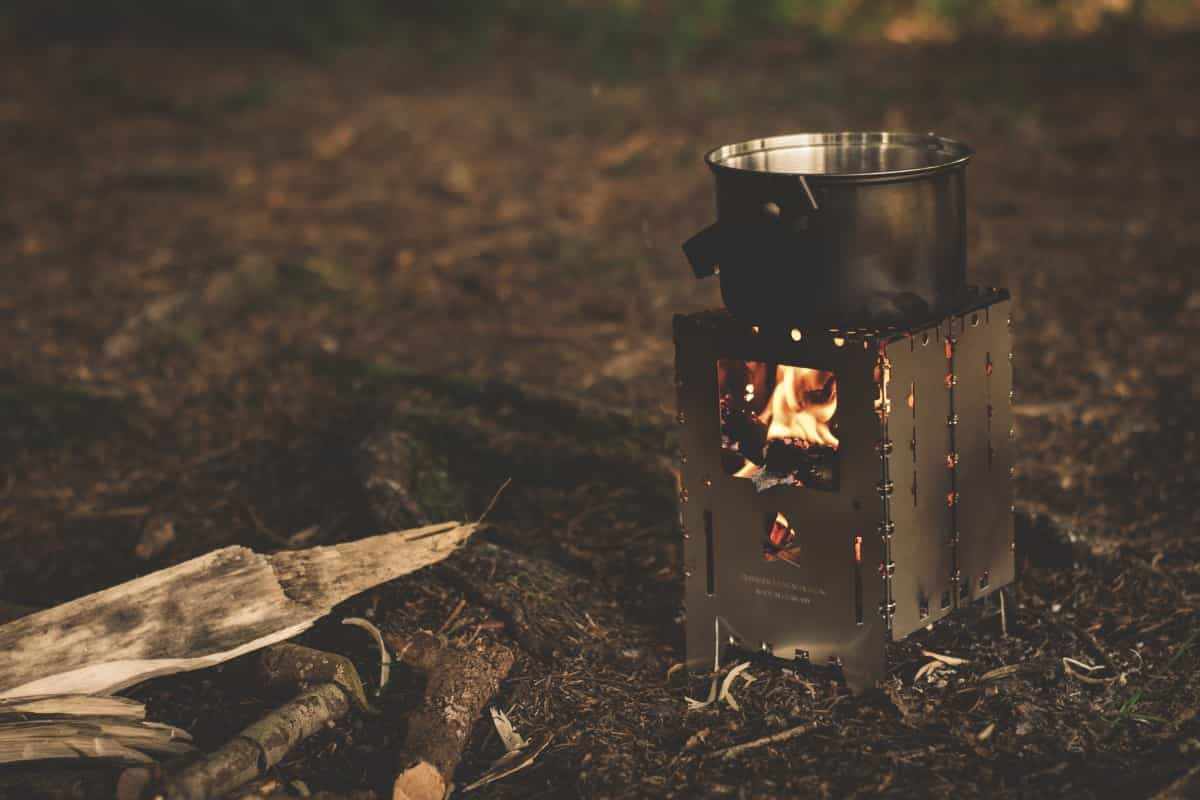
What type of camping stove should I use for camping in a tent?
When you’re tent camping, cooking will need to be done outdoors to reduce the risk of a fire in your tent. Gas camping stoves are the best option for tent camping because the stove and canisters are lightweight to carry to your pitch and the stove should be reliable, as long as you aren’t camping in cold conditions. Another good option is an alcohol-burning stove, which is easy to use, compact and lightweight, but takes longer to warm up.
What type of camping stove should I use in a caravan or motorhome?
If you’re staying in a caravan or a motorhome, it’s likely that you’ll have access to a pitch with an electric hook-up. That makes an electric camping stove your best option because they are safe, quick to warm up and very reliable.
However, it’s always a good idea to have a back-up stove in the event of a power outage. In these scenarios, gas camping stoves are a good alternative, as long as your space is properly ventilated or they are used outdoors. Family stoves are also a viable option, because they have multiple cooking zones and can be used for larger meals.
What type of camping stove should I use in glamping accommodation?
A woodburning stove, family stove or multi-fuel stove are some of the most popular options for glamping accommodation because your stove won’t need to be as lightweight, small or portable as it would when camping.
Woodburning stoves are particularly popular because they look stylish and they can be used indoors, as long as there is proper ventilation such as a flue in a bell tent.
What type of camping stove should I use on a long expedition?
Alcohol-burning stoves are a good option for long-distance expeditioners and wild campers because they’re very lightweight and compact, durable and very dependable. They’re also safe, which is an added benefit for families, nervous campers or younger users.
Multi-fuel stoves are also a good option for long expeditions, because they can withstand cold temperatures and high altitudes. However, they require more maintenance and a store of gas canisters or fuel, which can weigh down your backpack.
What type of camping stove should I use in the winter?
If you’re camping in the winter, avoid using a gas canister stove, because they can be tricky to start up in cold conditions. The best camping stoves for cold weather are liquid fuel stoves because the pressure won’t drop in cold temperatures.
FAQ
Are camping stoves safe to use indoors?
You should avoid using a camping stove indoors because they are fire hazards and many stoves release carbon monoxide. Electric camping stoves are the safest option for indoor use if absolutely necessary, followed by gas camping stoves in motorhomes or caravans, as long as there is proper ventilation.
What is the safest camping stove?
Most camping stoves have safety features such as automatic cut-off technology, making them safe, but alcohol-burning stoves are the best option for campers worried about safety because they’re easy to use for beginners.
For other handy camping equipment such as camping chairs, camping lights or camping accessories, check out our other guides.
Browse our camping equipment guide